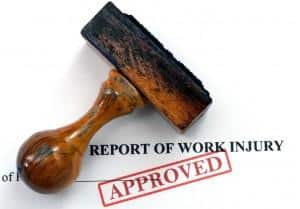
There are almost as many different types of personal injury cases as there are different ways to suffer an injury. From slips and falls to serious car accidents, personal injury law covers a broad range of situations and incidents. As a result, no two cases are likely to be the same, especially when it comes to the timeline that they follow. During a personal injury case, a lot will depend on how severe the injuries sustained were, which party was at fault and how clear that is, and the clarity of other issues. It’s also important to consider whether or not the injury is covered by an insurance policy. Read on to find out more about some of the main considerations related to making a personal injury claim.
Is the Incident Covered By Insurance?
If you have suffered an injury and you believe that somebody else might be legally responsible, it’s important to find out if that person or company has insurance that will cover any injury claim that you make. For example, if you fall over and sustain an injury, does the owner of the property where this happened have liability coverage? If you are involved in a car accident, does the other driver have insurance that can pay out for your claim? Whether or not the incident is covered by insurance is important since it can determine whether or not you would actually be able to claim any damages awards that you are given after a personal injury trial. Consider the extent of your injuries and whether you have insurance coverage of your own that might be able to provide you with a solution you are satisfied with.
Hiring a Personal Injury Lawyer:
Other than in the simplest of injury cases where you have not suffered significant harm and you’re confident that you will be able to get a satisfactory result by yourself, it’s a wise idea to at least talk over the details of your case with a personal injury attorney like Brown and Crouppen St Louis. Talking with an attorney is not the same as hiring one and many personal injury lawyers are happy to provide an initial consultation free of charge where they will discuss your case with you and make your legal options clear. In many attorney-client agreements, when it comes to personal injury cases, the lawyer will work on a contingency basis where the client pays nothing unless they win a settlement or a court judgment in their favor. The attorney will then take an agreed-upon percentage of the judgment or settlement as a fee for their services.
Whether or Not to File a Lawsuit:
You may have already heard that most personal injury cases will successfully reach a settlement before going to trial. Many can be resolved without filing a civil lawsuit. You can get a settlement and compensation for the injury you have suffered without having to go to court. If there is insurance coverage in place, you can file a third-party claim against the insurance provider of the at-fault party. To do this, you will need to get information on the other party’s insurance including their policy number. Then send a notice of claim to the provider that includes the insured party’s information, your information, the accident date, and a letter of notification to declare that you have suffered an injury and intend to pursue a claim. You do not need to be too specific at this point, as this will come later during settlement negotiations and in future correspondence.
Getting the Best Personal Injury Settlement:
Once you have started the personal injury settlement negotiation process either through the insurer or in court, you will need to have a specific strategy in place to improve your chance of getting the best personal injury settlement result. Some of the main things to think about include:
-
Have a Settlement Amount in Mind:
When writing your demand letter for the personal injury settlement, you will have come up with an amount that you believe your claim is worth. Before speaking to insurance adjusters regarding your demands, it’s a good idea to make a decision on a minimum settlement figure that you are willing to accept. Keep this amount to yourself and use it when the counter offers are being made back and forth. Bear in mind that you don’t have to stick to this figure. In some cases, facts that you might not have considered might be pointed out and might make your claim weaker, leading you to lower the minimum amount you’ll accept.
-
Avoid Accepting the First Offer:
It is quite standard for insurance companies to start the negotiations by offering an extremely low amount in the hope that you will accept it and save them money. They are also using this strategy to test your patience and figure out if you understand what your claim is worth. If the first offer is reasonable, consider making a counter offer that is just a little lower than the amount you stated in your demand letter. This shows the adjuster that you are willing to be reasonable and compromise.
-
Wait for a Response:
Waiting for a response can be nerve-wracking, but don’t lower your demand more than once until the adjuster has responded to you with a counter offer. Never reduce your demand amount twice without first getting new offer from the adjuster. Whenever the adjuster comes up with new reasons for a low offer, go over each one and deal with the arguments, which will help you in either getting a reasonable offer or putting more pressure on the insurance company to make sure that a reasonable offer is coming. If you are struggling to come to any kind of agreement with insurance adjusters, it’s worth considering hiring a personal injury attorney who can take this over for you with more experience and skill.
A personal injury claim can be filed for almost any injury that you suffer due to the negligence or actions of somebody else.




